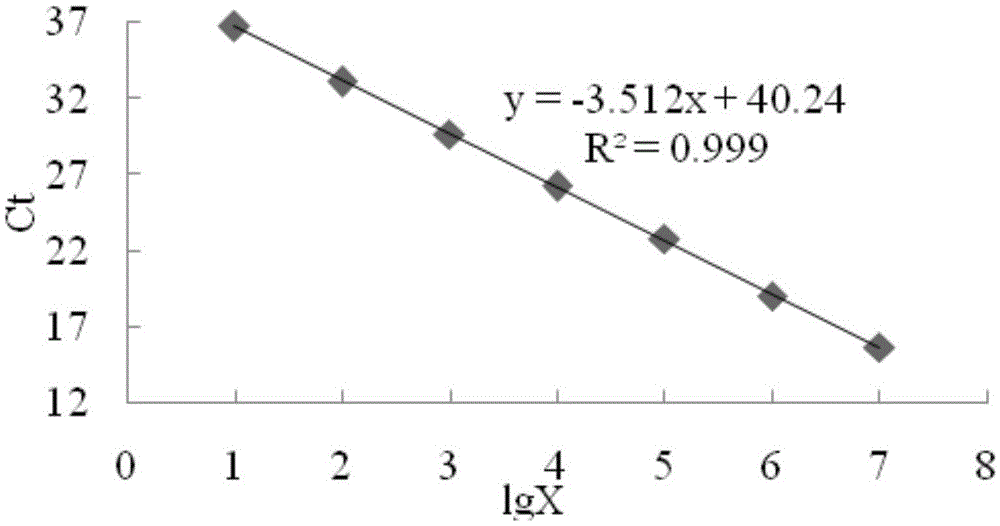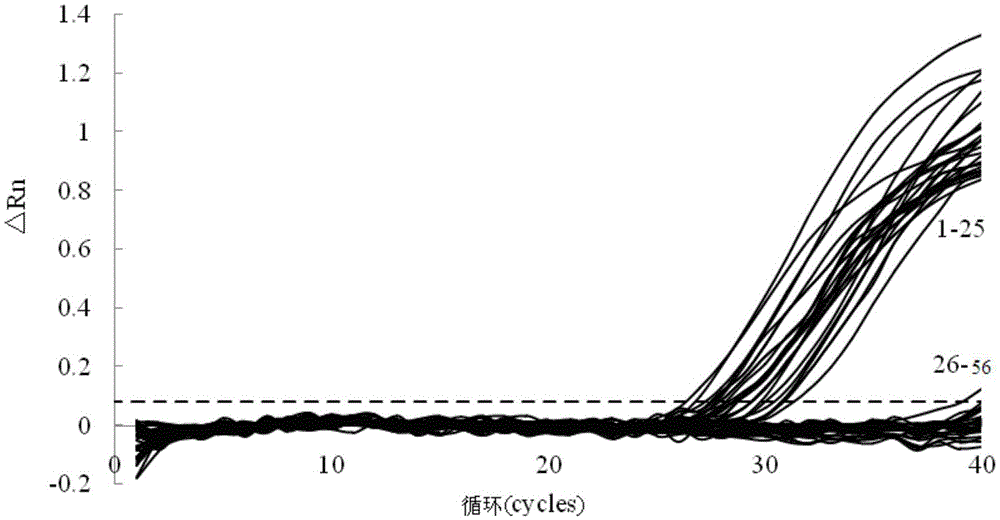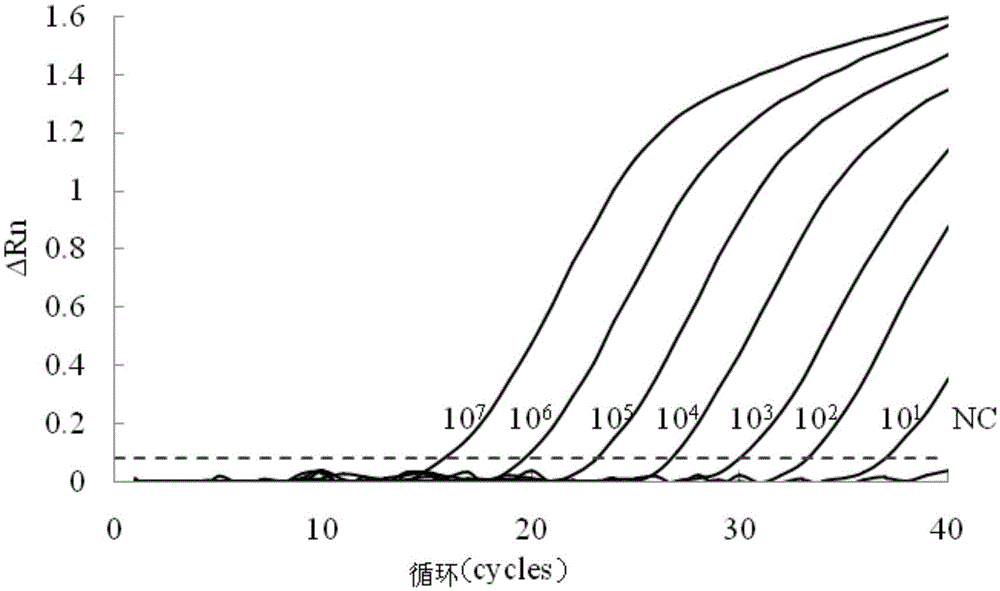Primer and probe for fluorescence quantitative PCR of phomopsis amydalina TaqMan
A Phomopsis and fluorescence quantitative technology, which is applied in the direction of microorganisms, microorganism-based methods, biochemical equipment and methods, etc., can solve problems such as the reliability of detection results, and achieve reliable and easy-to-operate detection results
- Summary
- Abstract
- Description
- Claims
- Application Information
AI Technical Summary
Problems solved by technology
Method used
Image
Examples
Embodiment 2
[0053] Embodiment 2: Actual sample detection
[0054] The 50 samples collected in the field were detected by isolation culture method, conventional PCR method and fluorescent quantitative PCR method. The results showed that in the TaqMan fluorescent quantitative PCR, 43 samples showed obvious amplification curves, with a detection rate of 86%; in conventional PCR, 39 samples were positive, with a detection rate of 78%; while only 36 samples in the culture method Phomopsis amygdala was successfully isolated, and the detection rate was 72% (as shown in Table 4). Therefore, it can be considered that the sensitivity of fluorescent quantitative PCR detection samples is higher than that of culture method and conventional PCR. At the same time, the separation and culture method has a long experimental cycle, the whole detection process needs 72h, and the workload is large, and it is susceptible to the interference of saprophytic bacteria to cause deviations in the experimental result...
PUM
 Login to View More
Login to View More Abstract
Description
Claims
Application Information
 Login to View More
Login to View More - R&D
- Intellectual Property
- Life Sciences
- Materials
- Tech Scout
- Unparalleled Data Quality
- Higher Quality Content
- 60% Fewer Hallucinations
Browse by: Latest US Patents, China's latest patents, Technical Efficacy Thesaurus, Application Domain, Technology Topic, Popular Technical Reports.
© 2025 PatSnap. All rights reserved.Legal|Privacy policy|Modern Slavery Act Transparency Statement|Sitemap|About US| Contact US: help@patsnap.com



